A mother of 4 in her early 50’s who is bothered by a deflated appearance of her breasts after pregnancy. She is 5’ ½” and 112 lbs and is shown before and again, 6 weeks after subglandular placement of Sientra Opus smooth round high profile 280 cc cohesive silicone gel implants placed through an inframammary incision.
Discussion: She has early breast ptosis but because of her petite size the implants were enough to fill up the breasts and correct the drooping appearance. She is on the borderline of requiring a breast lift and the implants were placed in a subglandular space so that they will drop with the breasts and avoid a “waterfall” appearance that would be likely to happen in her case with a subpectoral placement which would have the breasts “falling off” of the breast implant. 6 weeks is still early and we can expect the breasts to drop and settle more over the next few months.
Update: Our patient is now seen 1 ½ years after surgery. With the subglandular placement, the implants have settled with the breasts and avoided a “waterfall” deformity which can be more common with the subpectoral approach in a patient with early ptosis.
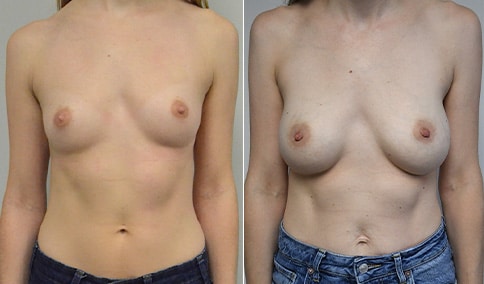
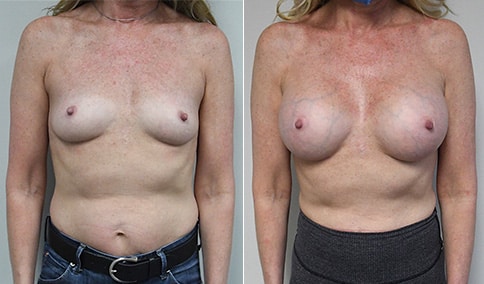
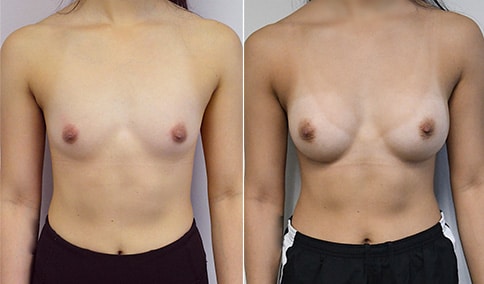
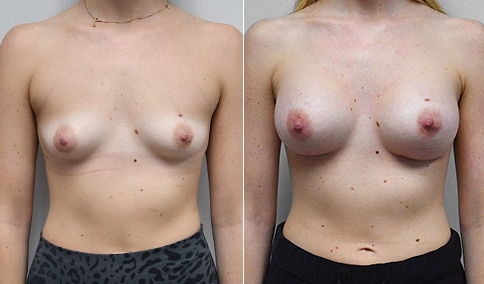
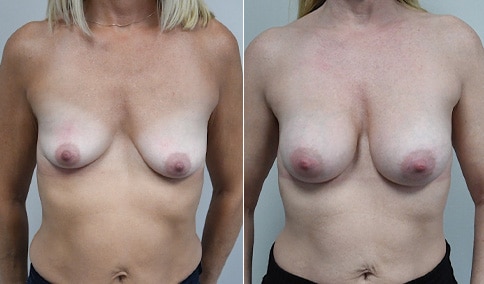
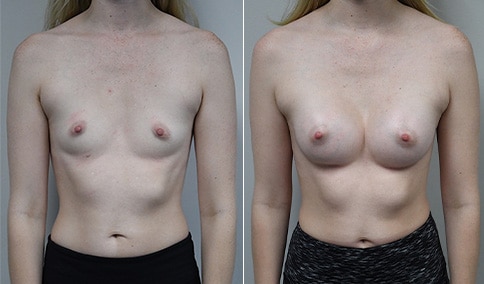
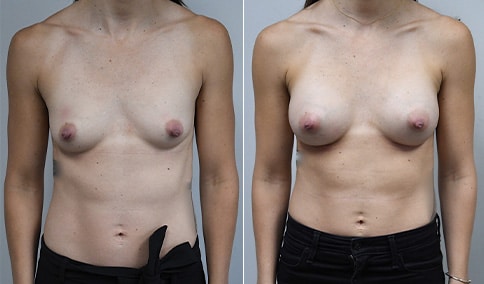
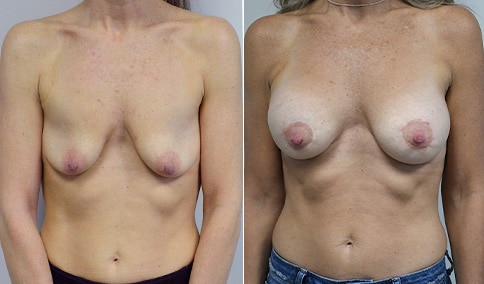
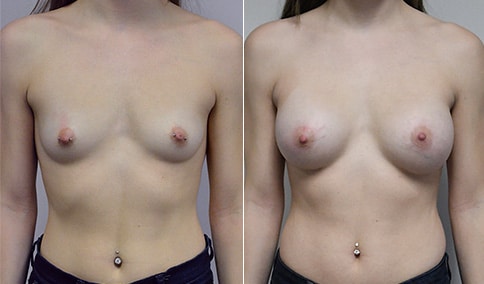
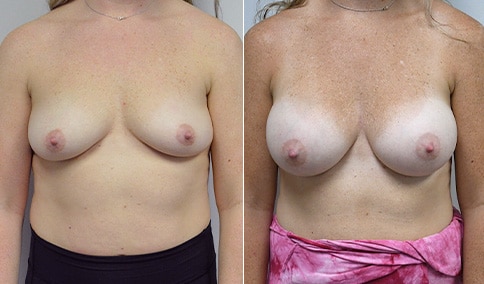
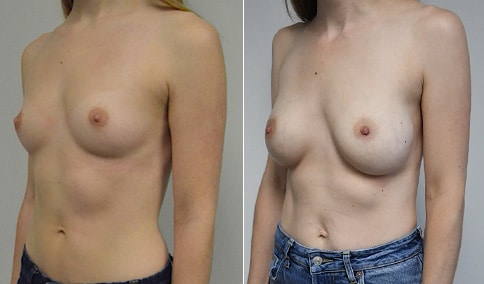
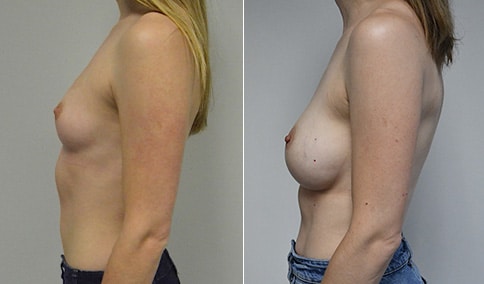
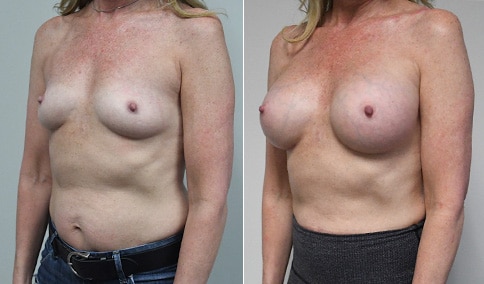
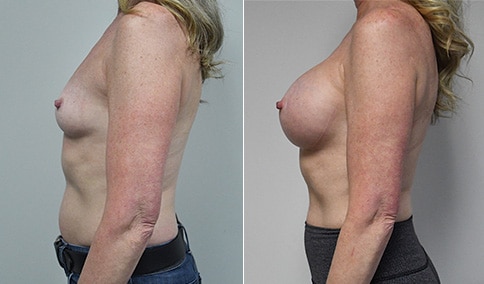
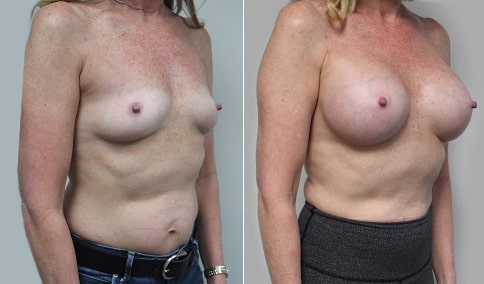
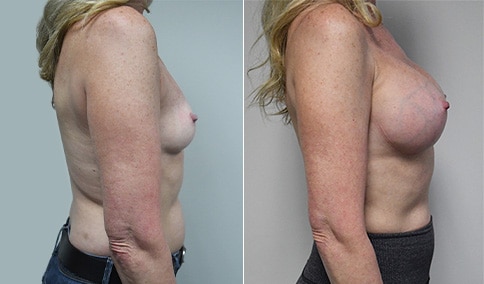
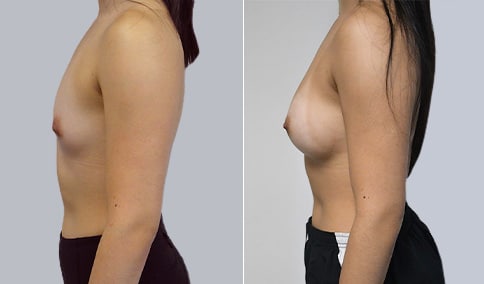
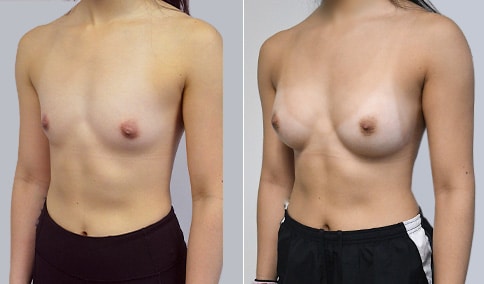
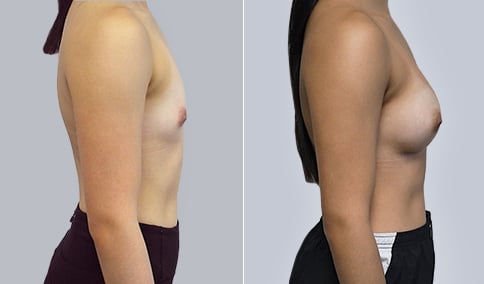
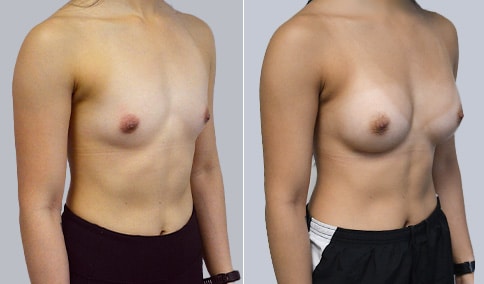
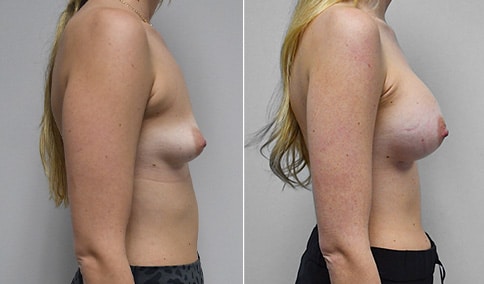
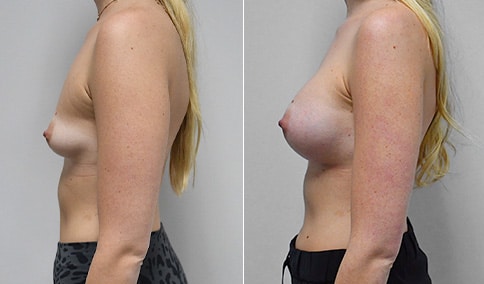
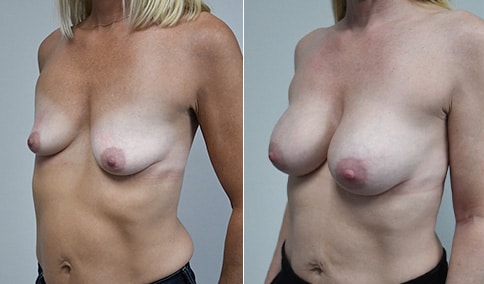
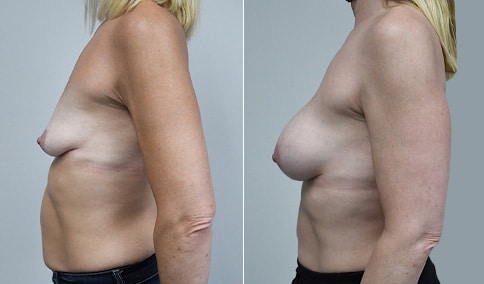
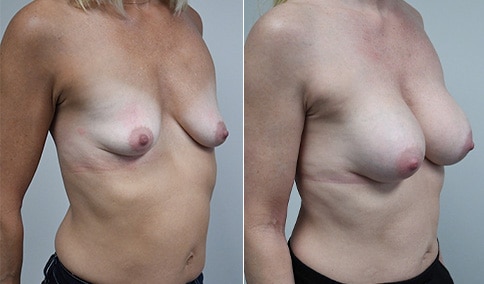
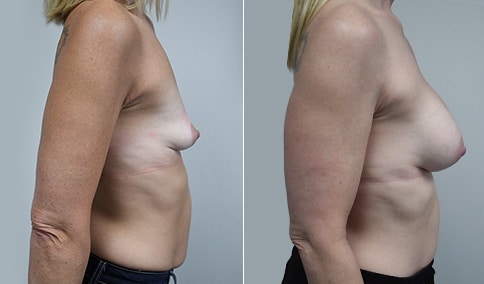
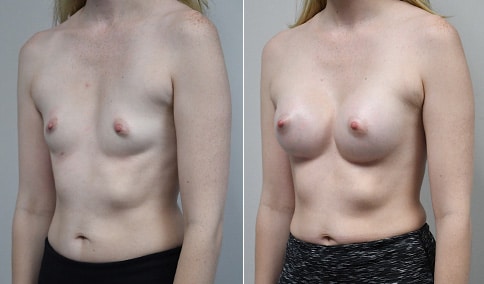
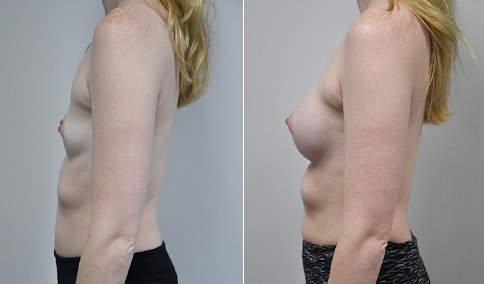
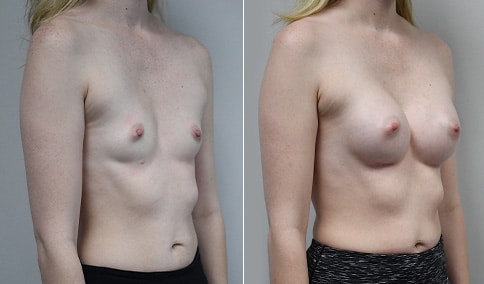
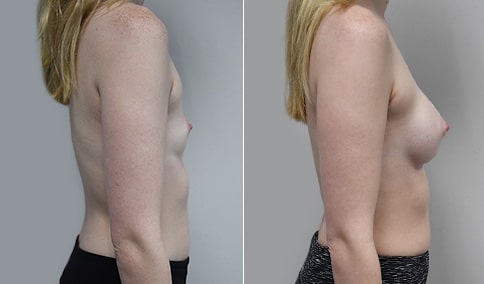
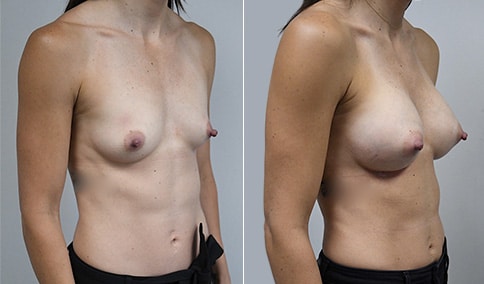
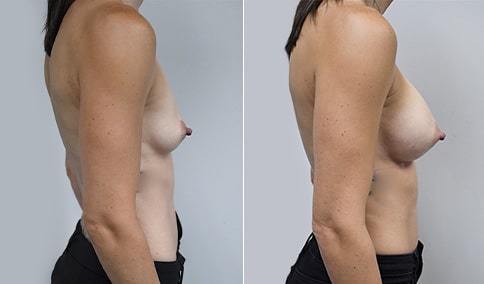
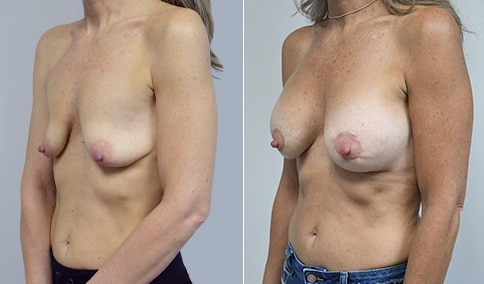
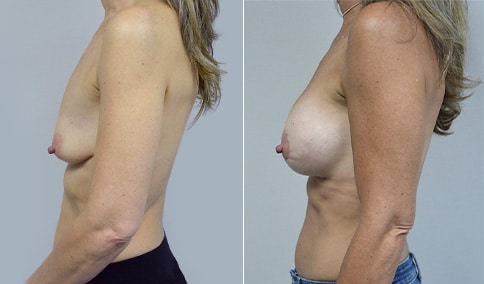
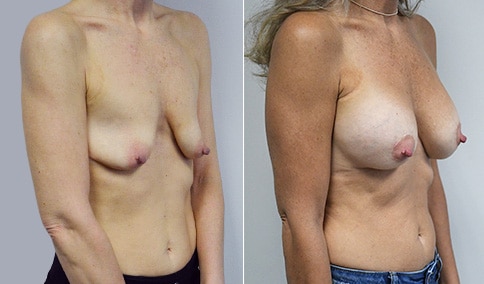
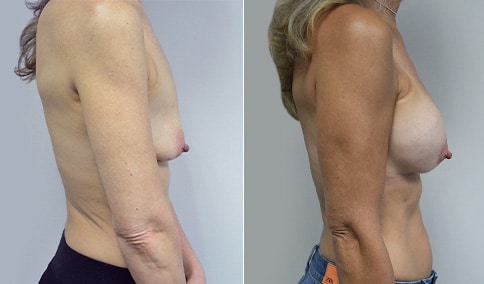
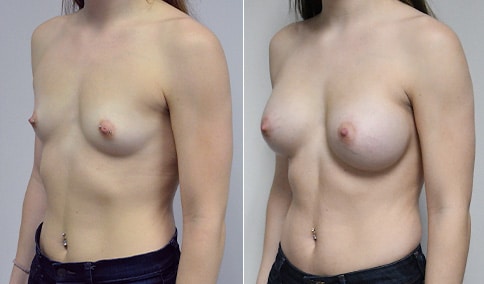
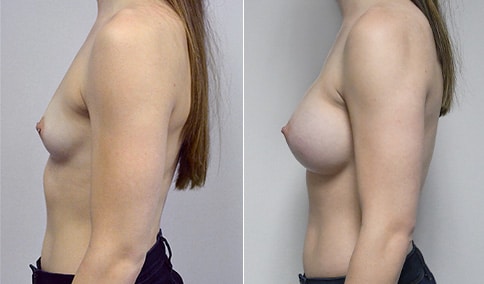
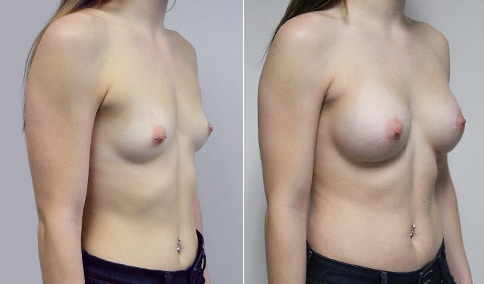
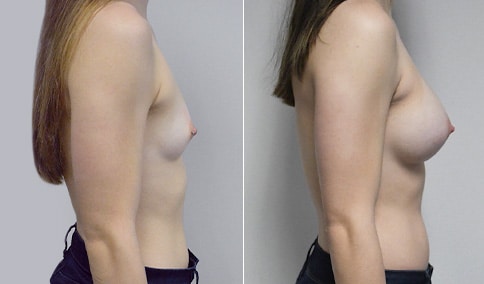
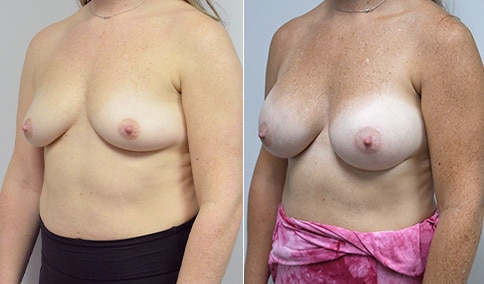
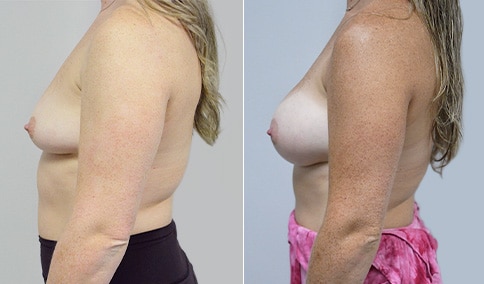
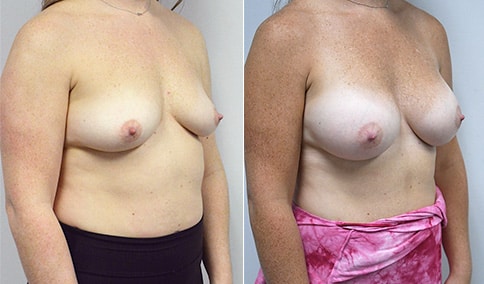
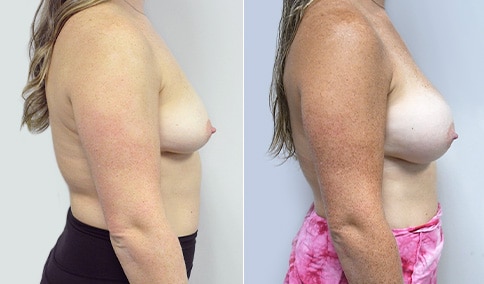





Cosmetic & Plastic Surgery Specialist
"I treat my patients like I would treat
- Jonathan D. Hall, MD, FACSmembers of my own family."
Schedule Consultation